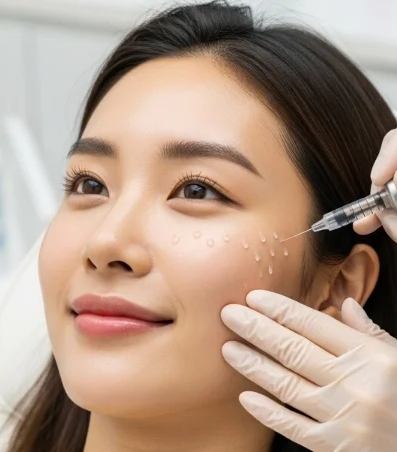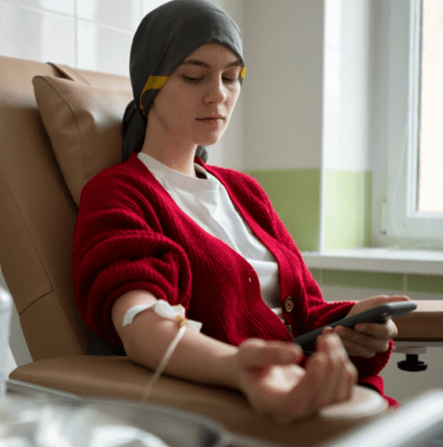Aging is a natural part of life—but that doesn’t mean men over 50 need to accept low energy, brain fog, loss of muscle mass, or a declining sex drive as their new normal. In many cases, these symptoms are linked to low testosterone, and Testosterone Replacement Therapy (TRT) may offer a safe and effective solution.
However, TRT in older adults comes with unique benefits, risks, and considerations. In this guide, we’ll explain what men over 50 need to know before starting testosterone therapy—from testing and safety to results and ongoing monitoring.
🧪 Understanding Testosterone Decline After 50
📉 The Natural Decline
After the age of 30, testosterone levels drop by about 1–2% per year. By the time many men reach 50, they may have significantly lower-than-optimal levels, even if they’re still within the “normal” lab range.
Common symptoms of low testosterone after 50 include:
- Low energy or chronic fatigue
- Reduced sex drive and erectile issues
- Decreased muscle mass and increased body fat
- Mood swings, irritability, or depression
- Loss of motivation or mental sharpness
- Trouble sleeping
These symptoms are often written off as “just aging,” but hormone deficiency may be the root cause—and it’s treatable.
🔬 Testing: Confirming Low Testosterone
Before starting TRT, your provider should perform:
- Morning total testosterone test (levels are highest in the morning)
- Free testosterone test (the active form in your body)
- Other labs: SHBG, LH, FSH, estradiol, PSA (prostate), hematocrit, and liver function
🔎 Normal testosterone levels range from 300–1,000 ng/dL, but many men feel best around 600–900 ng/dL, depending on age and health status.
✅ Benefits of TRT for Men Over 50
TRT can help restore a sense of youthfulness, vitality, and well-being. Men in their 50s and beyond often report:
💪 Improved Muscle Mass & Strength
Testosterone stimulates muscle protein synthesis, helping to reverse age-related sarcopenia (muscle loss).
🔋 Enhanced Energy & Motivation
Many older men on TRT experience renewed stamina and no longer feel drained by midday.
🧠 Better Cognitive Function
TRT has been shown to enhance memory, focus, and executive function in men with age-related testosterone decline.
❤️ Renewed Libido & Sexual Function
Improved sex drive, erections, and performance are commonly reported benefits.
😀 Uplifted Mood & Confidence
TRT may help reduce symptoms of depression and irritability, especially in men unresponsive to traditional treatments.
⚠️ Risks and Considerations for Older Adults
TRT is generally safe when properly monitored—but age brings specific factors to watch for.
🧬 Prostate Health
There’s no strong evidence that TRT causes prostate cancer, but men with a history of prostate cancer are usually not candidates. PSA (prostate-specific antigen) should be monitored regularly.
🩸 Cardiovascular Risk
While recent studies show no increased heart attack or stroke risk in healthy older men on TRT, those with uncontrolled heart conditions or high hematocrit may need special monitoring.
🩺 Blood Viscosity and Clotting
Testosterone increases red blood cell production, which can thicken the blood. Older patients need regular hematocrit tests to avoid clotting risks.
❄️ Suppression of Natural Testosterone & Fertility
TRT can suppress your body’s own production of testosterone. In men over 50, this may not be a concern—but if fertility is still desired, alternatives like hCG should be considered.
💉 TRT Delivery Options for Older Men
Your doctor may recommend different administration methods depending on your lifestyle and health status:
| Method | Pros | Cons |
|---|---|---|
| Injections (IM or SubQ) | Cost-effective, fast results | May cause hormone peaks/troughs |
| Topical gels/creams | Easy to apply, steady levels | Risk of transference to others |
| Pellets (implanted) | Long-lasting (3–6 months) | Requires minor procedure |
| Oral testosterone (undecanoate) | Convenient | May affect liver, less widely used |
Your provider will help determine the best form based on your comfort, compliance, and medical needs.
🩻 Monitoring and Long-Term Management
TRT is not a “set it and forget it” treatment—especially after 50. Proper follow-up ensures both safety and effectiveness.
Regular labs every 3–6 months should include:
- Total and free testosterone
- Estradiol (to monitor estrogen levels)
- PSA and digital rectal exam (prostate health)
- Hematocrit and hemoglobin
- Liver and kidney function
🧠 Lifestyle Still Matters—Even on TRT
TRT works best when combined with healthy habits. After 50, that’s even more important.
- Eat anti-inflammatory, protein-rich foods
- Strength train 3–4x/week to preserve muscle
- Prioritize quality sleep (7–9 hours)
- Manage stress and limit alcohol
- Stay socially and mentally active
These factors enhance TRT benefits and reduce risks like weight gain or blood pressure spikes.
📝 Who Should Avoid TRT?
You should not start TRT without careful evaluation if you have:
- Active or recent prostate or breast cancer
- Severe untreated sleep apnea
- High hematocrit levels (>54%)
- Uncontrolled heart disease
- Plans for future fertility (unless using adjuncts like hCG)
✅ Summary: TRT After 50 Can Be Life-Changing—with the Right Approach
| What to Know | Why It Matters |
|---|---|
| Get proper testing | Confirm low T, rule out other causes |
| Monitor health closely | Especially heart, prostate, and blood |
| Choose the right method | Injections, gels, or pellets all have pros/cons |
| Combine with lifestyle changes | Maximizes benefits and longevity |
| Work with a hormone specialist | Ensures safe, personalized care |
🔍 Final Thoughts
Testosterone therapy isn’t about trying to be 25 again—it’s about restoring balance and helping you feel sharp, strong, and confident in your 50s, 60s, and beyond. When managed responsibly, TRT can improve both quality of life and long-term vitality.
If you’re over 50 and struggling with low energy, reduced libido, or declining strength, talk to a knowledgeable provider about testing your testosterone. You don’t have to accept aging as decline—you can age with strength and clarity.




